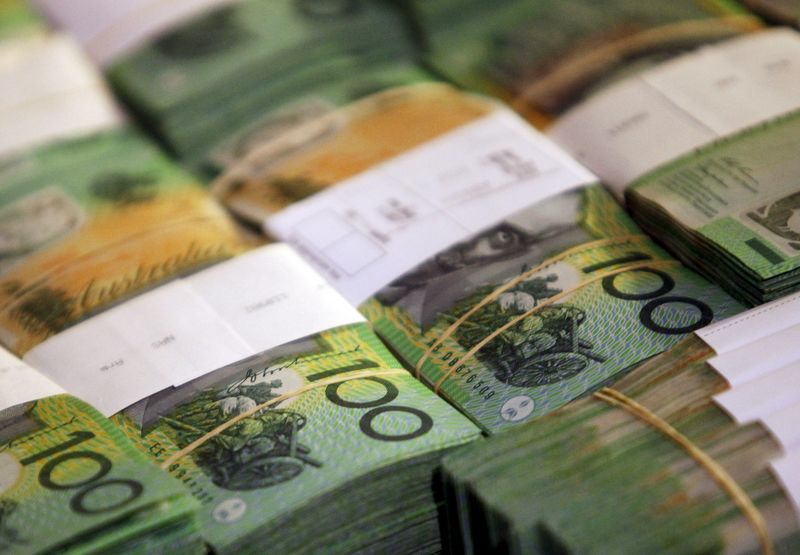By Wayne Cole
SYDNEY (Reuters) - Australia's jobless rate took a surprising drop in February even as employment all but stalled, a mixed bag that left the outlook clouded but did seem to lessen the chance of a cut in interest rates in the near term.
Thursday's report from the Australian Bureau of Statistics showed unemployment fell to 5.8 percent in February, when analysts had expected it to stay at 6.0 percent.
That owed much to a fall in the number of people looking for work since actual employment underwhelmed with an increase of just 300 in the month. Full-time employment rose a solid 15,900, only to be almost completely offset by a drop in part-time jobs.
Still, the monthly jobs numbers are notoriously volatile and the Reserve Bank of Australia (RBA) tends to focus on shifts in the unemployment rate to gauge the health of the labor market.
"They are waiting for greater clarity about what's happening in the economy and what the unemployment rate is telling them is the positives are outweighing the negatives," said Michael Blythe, chief economist at Commonwealth Bank.
"We are getting this trend decline (in unemployment), so no need for further rates' assistance."
Financial markets seemed to agree as investors lifted the local dollar to an eight-month high around $0.7620 <AUD=D4>.
Interbank futures <0#YIB:> continue to imply around a 50-50 chance of a rate cut by August, in part because policy steps by other major central banks were pushing the local dollar higher in a way that could prove a brake on exports.
Just on Wednesday the U.S. Federal Reserve signaled a slowdown in the planned pace of its policy tightening, sending the U.S. dollar reeling.
Asked about the Fed's move, RBA Assistant Governor Guy Debelle said practically every central bank in the world was keen to see a falling currency.
"We would like a lower Australian dollar. But we can't all have depreciating currencies," Debelle said, conceding it would be hard to engineer a decline in the Aussie.
WORKERS WANTED
The labor market has been one of the star performers in an Australian economy grappling with the demise of a decade-long boom in mining investment.
Key has been growth in a range of service sectors which have been generating more than 300,000 new jobs a year.
An aging population has boosted health care, while a boom in visitors from China and the rest of Asia lifted tourism and education. Home building is also hitting records and generating jobs in architectural and engineering services.
Measures of demand for labor were also flashing green. A well-regarded survey of industrial trends released on Thursday showed strength in home building had boosted conditions to their best in two decades.
The survey from the Australian Chamber of Commerce and Westpac Bank also found the outlook for the labor market at its strongest since the mid-2000s.
"Employment intentions have turned positive and firms expect to grow their workforce over the next three months," said Westpac senior economist, Andrew Hanlan.
"The survey correctly foreshadowed the strengthening in economy-wide jobs growth over the past year. It points to further solid gains in 2016."
